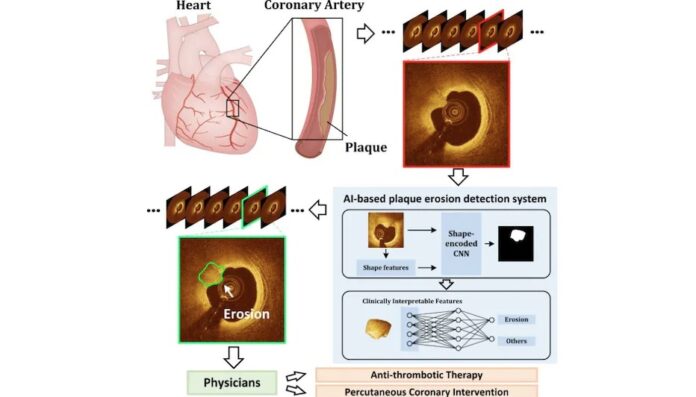AI-Based Technology: The approach monitors arterial plaque using optical coherence tomography (OCT) pictures.
Researchers have developed a breakthrough artificial intelligence AI-based technology that can identify plaque erosion in heart arteries, which might lead to the development of new therapies for heart illnesses. The approach monitors arterial plaque using optical coherence tomography (OCT) pictures. The discovery is critical since plaque breakdown can lead to a heart attack or other serious cardiac illnesses. The optical imaging technology known as OCT may be utilized within blood vessels to obtain 3D images of the coronary arteries, which deliver blood to the heart muscles.
(Also see: India 5G Spectrum Auctions Date Finally Confirmed on July 26)
The OCT technology has been used to detect plaque erosion. However, due to the volume of data collected and the difficulty in understanding the pictures, there is significant interobserver variability. To address this, researchers used AI in the OCT method to detect plaque degradation.
“If cholesterol plaque lining arteries start to erode it can lead to a sudden reduction in blood flow to the heart known as an acute coronary syndrome, which requires urgent treatment. Our new method could help improve the clinical diagnosis of plaque erosion and be used to develop new treatments for patients with heart disease,” said Zhao Wang of China’s University of Electronic Science and Technology. Wang is also the study’s primary author, which was published in Biomedical Optics Express.
The new AI approach consists of two basic steps: first, an AI model known as a neural network analysis the original picture and two pieces of shape information to anticipate plaque erosion zones.
This prediction is then enhanced using a post-processing algorithm that replicates professional physicians’ expertise to perform the diagnosis. “We had to develop a new AI model that incorporates explicit shape information, the key feature used to identify plaque erosion in OCT images. The underlying intravascular OCT imaging technology is also crucial because it is currently the highest resolution imaging modality that can be used to diagnose plaque erosion in living patients,” Wang explained.
The novel method was put to the test by the researchers, who discovered that the automated approach had a 73% positive predictive value and could predict 80% of the cases of plaque erosion. Additionally, the diagnosis made with the aid of AI technology was in line with that of skilled doctors.













